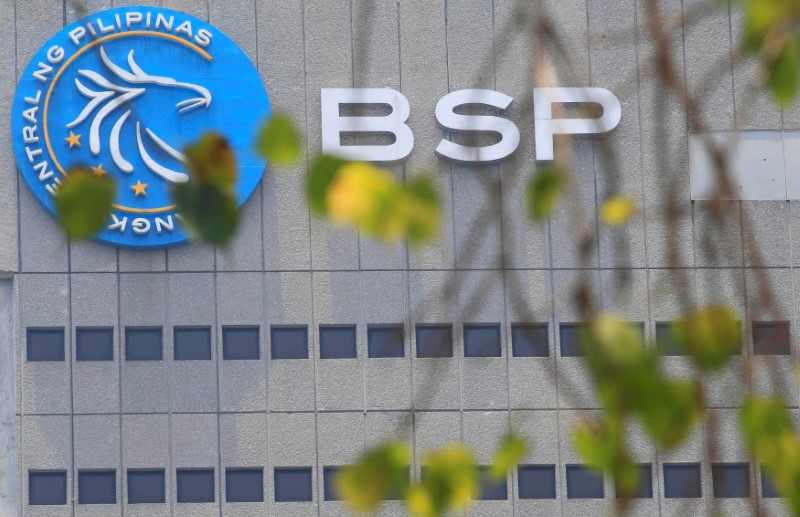
A logo of the Bangko Sentral ng Pilipinas (Central Bank of the Philippines) is seen at their headquarters in Manila, Philippines April 28, 2016. REUTERS/Romeo Ranoco
February 25, 2018
MANILA (Reuters) – The Philippines central bank is selling its dollar reserves as a defensive measure to manage excessive volatility driven by speculation against the peso, which is hovering near 11-year lows, the bank’s governor said on Sunday.
The Bangko Sentral ng Pilipinas (BSP) chief sought to allay concern that recent market reforms would put more pressure on an already weak currency and stoke inflation.
“BSP sells foreign exchange from its reserves to manage excessive peso volatility,” said BSP Governor Nestor Espenilla, adding that the tongue cancer he had been diagnosed with in November was successfully treated and he was closely monitoring the financial markets.
The Philippine peso closed at an 11-year low at 52.34 pesos per dollar on Monday. It ended the week at 51.89.
The central bank chief also dispelled market concern that a cut in banks’ reserve requirement ratio would accelerate inflation, which hit 4.0 percent in January, the highest since October 2014.
“What BSP is executing is just an operational adjustment that should have a neutral effect on the monetary policy stance,” Espenilla told reporters, calling the fears of ensuing looser monetary policy “unfounded”.
On Feb. 16, the central bank cut banks’ reserve requirement ratio by 1 percentage point to 19 percent. The rule, which will take effect in March, is expected to inject more than $1.5 billion in liquidity.
Speculators, Espenilla said, are using the reduction as a factor that could dampen the peso.
The central bank lowered the reserve requirement to promote a more efficient and level financial system that is less biased against deposit-taking financial institutions, Espenilla said.
“The bottom line, the BSP has many options to maintain firm monetary control,” he said.
Policy setting has remained steady since the central bank raised rates by 25 basis points in September 2014.
(Reporting by Neil Jerome Morales)

